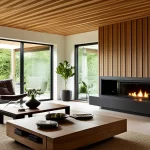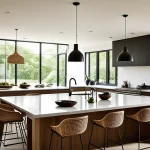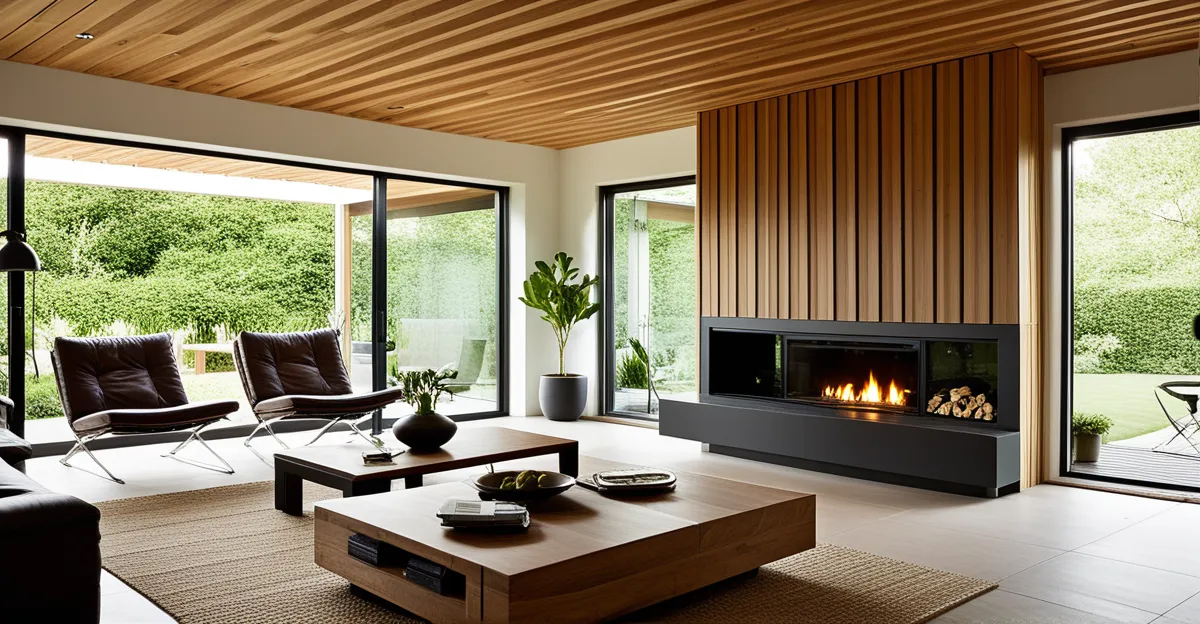Core Principles of Sustainable Home Design
Sustainable design principles focus on creating eco-friendly homes that minimize environmental impact while enhancing occupant well-being. At its core, sustainable design balances energy use, resource conservation, and healthy living conditions. This includes selecting green building basics such as renewable or recycled materials, efficient systems, and waste reduction techniques.
A fundamental strategy involves using materials with low embodied energy and low toxicity, promoting healthier indoor environments. Systems like rainwater harvesting and solar panels support resource efficiency by reducing reliance on external utilities. Efficient insulation and ventilation ensure minimal energy consumption for temperature control, vital in sustainable design principles.
Have you seen this : How Can You Turn Your British Home into a Green Oasis?
Resource efficiency extends beyond materials. Smart layout planning maximizes natural light and airflow, reducing artificial lighting and HVAC needs. Sustainable home design also incorporates durability and adaptability, ensuring long-term value and reduced waste from constant renovations. Together, these eco-friendly homes demonstrate that integrating core sustainable design principles can yield homes that are both practical and gentle on the planet.
Enhancing Home Comfort Through Sustainable Design
Sustainable design principles significantly improve home comfort by prioritizing indoor air quality, temperature regulation, and acoustic comfort. High-quality ventilation systems using eco-friendly materials reduce indoor pollutants, allergens, and moisture buildup, directly enhancing air quality. This is vital in creating healthy, enjoyable living spaces.
Also to discover : How Can You Enhance Your Home’s Aesthetic with Sustainable Choices?
Effective temperature regulation is achieved through smart insulation and passive design strategies such as proper window placement and shading. These reduce reliance on heating and cooling systems, maintaining pleasant indoor temperatures year-round. For example, thermal mass materials absorb and release heat, keeping interiors stable.
Acoustic comfort is often overlooked but crucial. Sustainable homes incorporate soundproofing techniques with dense, natural materials that limit noise transmission. This leads to quieter environments conducive to both relaxation and productivity.
Together, these elements foster an environment where comfort aligns with sustainability. By focusing on ventilation, insulation, and soundproofing, eco-friendly homes provide healthier, more comfortable spaces that outperform many traditional designs.
Boosting Home Functionality and Efficiency
Maximizing home functionality means integrating energy-efficient systems that reduce waste and cut costs. Energy-efficient appliances, such as LED lighting and Energy Star-rated devices, significantly lower electricity consumption. Coupling these with smart thermostats or automated controls optimizes performance, creating a home that adapts to occupants’ schedules while minimizing energy use.
Water efficiency is equally important. Technologies like low-flow fixtures, rainwater harvesting, and greywater recycling conserve water without sacrificing convenience. These systems align with sustainable home principles by reducing dependency on municipal water and lowering utility bills. Thoughtful plumbing layouts ensure efficient water flow and minimize waste.
Adaptable design enhances functionality by allowing spaces to evolve with changing family needs. Flexible rooms, movable walls, or multipurpose areas support work-from-home setups, growing households, or aging in place. This flexibility prevents frequent renovations and promotes long-term sustainability, making homes more practical and resilient over time.
Together, energy efficiency, water conservation, and adaptable design principles form the backbone of a functional, sustainable home equipped for future challenges. Implementing these elements makes everyday living easier, greener, and cost-effective.
Sustainable Design Versus Traditional Home Design
Understanding the differences between sustainable design vs. traditional design reveals the practical benefits eco-friendly homes offer. Sustainable homes focus on energy efficiency and resource conservation, which translate directly into improved occupant comfort and long-term value. Traditional homes often rely on less efficient materials and systems, leading to higher energy consumption and environmental impact.
Performance comparison shows that sustainable homes provide better temperature regulation due to enhanced insulation and passive design, reducing heating and cooling costs significantly. Improved indoor air quality in sustainable homes also reduces health risks compared to many conventional buildings. Additionally, incorporating green building basics like renewable materials lessens the carbon footprint over a home’s lifecycle.
Cost savings from sustainable design come from lower utility bills and reduced maintenance needs. While initial investments may be higher, payback periods often span just a few years. Real-world case studies confirm these trends, showing that sustainable homes maintain value better and adapt flexibly to changing needs.
In summary, sustainable design principles not only foster comfort and efficiency but also lead to measurable economic and environmental advantages over traditional home designs. This makes eco-friendly homes a compelling choice for forward-thinking homeowners.
Practical Tips for Adopting Sustainable Home Design
Small steps can make a big difference when incorporating practical sustainable design tips into your home improvement plans. Start by choosing local and non-toxic building materials to reduce environmental impact and support healthier indoor air quality. For example, natural wood from nearby suppliers or low-VOC paints minimize harmful emissions and transportation footprints.
DIY sustainability efforts might include sealing windows and doors to improve insulation or installing energy-efficient LED bulbs to reduce electricity use instantly. These small investments enhance home comfort and lower utility bills. Another tip is to optimize natural light by rearranging furniture or using light-colored interior finishes, reducing dependency on artificial lighting.
While DIY actions have great value, partnering with experienced professionals ensures efficient and lasting results. Experts can guide you in selecting appropriate green building basics and installing advanced systems like solar panels or rainwater harvesting. Their knowledge helps avoid costly mistakes and improves overall resource efficiency.
By combining simple DIY methods with expert advice, homeowners can successfully adopt sustainable design principles. This balanced approach promotes eco-friendly homes that are healthier, more efficient, and respectful of the planet.







